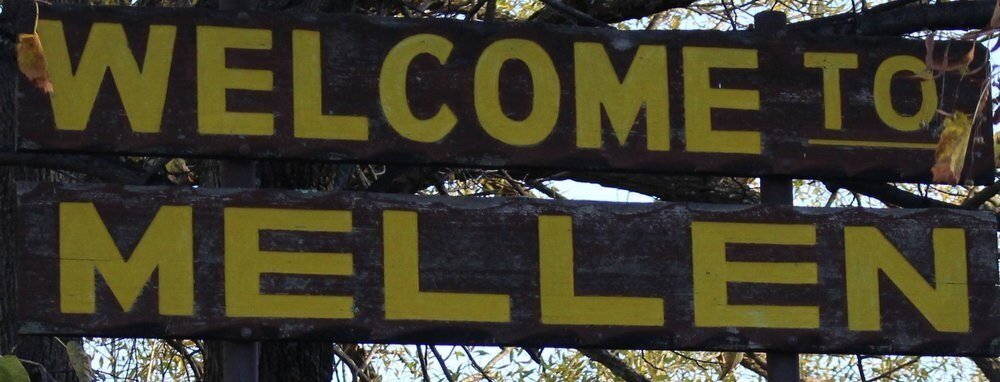Cryptid Profile: The Artrellia
Papua New Guinea is a 342,000 square mile Oceanian country that takes up the eastern half of the island of New Guinea and is located within the Pacific Ocean north of Australia. Regarded as one of the most culturally diverse countries in the world, it is still one of the least explored places on earth. The country is largely covered in mountainous, rugged terrain, and is also blanketed by thick tropical rainforest. Due to the difficult and rugged landscape, a large part of the country is only accessible either by foot or by airplane. Because of these terrain issues and lack of exploration, many researchers feel that a large amount of undiscovered plants, animals, and uncontacted tribes of people may still be hidden within the dense rainforests. One of these creatures is thought to be a dragon known as The Artrellia.
The monstrous Artrellia is described by locals as being a nearly 30ft long crocodile/dragon-like creature that has the ability to climb trees and breath fire. It is a strict carnivore that devours anything unlucky enough to enter its territory and it will consume the entire body of its victim, bones and all.
In 1933, Richard Archbold (an American zoologist and philanthropist) led one of the first scientific expeditions into the heart of New Guinea. The expeditions became known as The Archbold Expeditions and the main task was to map the island, document the environment, and study/collect the various forms of plant and animal life within the jungles. It was during these expeditions (which lasted from 1933-1939) that the team was told/warned about giant man-eating dragons from the locals. They were warned that if a team member happened to come across the Artrellia, that they would never be found again. The dragon would devour every last bit of them and leave nothing for the scavengers.
During WW2 (1939-1945), American, British, and Australian soldiers were stationed in Papua New Guinea as part of the New Guinea campaign. Originally occupied by the Japanese, the empire eventually surrendered to the Allies due to an effective naval blockade and the island was soon occupied by allied troops. It was during this time that allied troops began reporting that they were seeing giant lizard-like creatures within the rainforests. These giant lizards were reported as being between 15-20ft in length and very agile. While no direct contact was ever made with these lizards, the sightings continued regularly until all allied troops eventually left the island after the end of the war.
Fast forward to 1960, the last district commissioner of Port Moresby (the capital and largest city of Papua New Guinea) David Marsh (1921-2015) makes official statements regarding his sightings of giant lizard-like “dragons” within the jungle during the 1940’s while stationed as a patrol officer. During that same year after Marsh made his statements, local residents of the Kairuku-Hiri District delivered to the Agricultural Administration a large unknown skin and jawbone of a creature that they could not explain. They referred to this mysterious creature simply as a dragon. A year later in 1961, two explorers by the names of Robert Grant and David George were exploring the Strachan Island District when they had a visual encounter of the Artrellia. The two men described the unknown lizard as having gray skin, a neck that appeared to be 3ft long, it stood nearly 4f tall, and had a body which they believed to measure around 26ft in length. The men kept their distance for personal safety reasons and the giant lizard disappeared back into the jungle.
Nearly 40yrs after the Archbold Expeditions, another expedition team would arrive within Papua New Guinea, this time known as the Operation Drake Expedition. Operation Drake was an international, round-the-world scientific voyage that involved many young researchers (between the ages of 17-24) from different countries and was funded by the Scientific Exploration Society. The expedition was split up into ten different phases, nine taking place on the ocean and one taking place on land. These phases were part of a serious scientific exploration, research, and community project. The leader of the expedition was Colonel John Blashford-Snell.
While stopped in Papua New Guinea, Col. Blashford-Snell became highly intrigued by stories and sightings told by the locals of the Artrellia. After interviewing a variety of witnesses, the team eventually made their way into the Papuan swamplands and searched the jungles for nearly two months. Eventually the team found what they were looking for, or so they thought. Bringing with them local hunters, the men managed to kill a lizard measuring almost 6ft long. At first it appeared that their search was successful, a true dragon had been found within the jungles and swamps of Papua New Guinea, but this dragon was not a mystery and it already had a name, Varanus salvadorii, or Salvadori’s Monitor. The creature they had found was nothing more than a juvenile and was still quite a few years away from reaching its maximum size of almost 13ft (some unofficial measurements claim they can grow upwards of 16ft). The specimen did not have gray skin, large dragon-like teeth, and was not able to breath fire. The search was back to square one.
Near the end of Col. Blashford-Snell’s search, it seemed that the true culprit behind the legend of the Artrellia had been discovered. A scientifically known species of monitor lizard was to blame because of misidentification, case closed. That was the general thought between team members until one of their own would have an encounter with the actual dragon. Team member Ian Redmond (English zoologist) was sitting on the ground and resting his legs in an old creek bed when he began to hear large footsteps breaking twigs and crushing underbrush in the jungle up and behind him. The dry creek bed he was in was below ground level of the forest floor and the footsteps he was hearing had enough of a weight to them that they came across as almost human-like. Because of this Redmond automatically assumed it was one of his team members walking along the top edge, but it wasn’t until he noticed that the sound wasn’t coming from two feet but rather from what sounded like four feet, that he soon turned around to see what was making it. When he turned and looked up, Ian Redmond saw the giant head and shoulders of a large lizard looking down at him. He described the dragon-like lizard head as being almost as large as a full grown horse head, and the shoulders were equal in size. Staying as calm as possible, Redmond slowly started to reach for his camera, but as he did, the lizard turned away from the edge of the creek bed and moved back into the jungle. Ian Redmond quickly exited the creek and called for his teammates, but a search of the area would turn up no signs of the Artrellia.
Sightings of the Artrellia continue sporadically to this day, but none as up close and personal as the one that took place back in the 80’s. What are locals seeing within the jungles of Papua New Guinea? Could it actually be an undiscovered species of gigantic monitor lizard? Or is it truly a “dragon” that has been making lunch of unfortunate people? While the classic fire breathing dragon theory is automatically dismissed, the gigantic monitor lizard theory isn’t as easily brushed aside. As stated above, Papua New Guinea is one of the most unexplored places on earth, and if scientists feel that never before seen or contacted tribes of people could be living within its rainforests, it is perfectly acceptable to believe a new species of giant lizard could be as well. Salvadori’s Monitor lizard is already known to live in the Papuan jungle and they are recognized by science as growing over 12ft long. The Komodo Dragon, while not native to P.N.G., is another example of a scientifically recognized giant lizard. This dragon can grow to lengths of over 10ft and can weigh upwards of 150lbs. If a lizard this large can exist and thrive while being confined to a select few islands in the world today, it perfectly believable that one only 10ft longer can exist in a place that most people haven’t even stepped foot in, let alone can get inside without problems. Perhaps the Artrellia is a subspecies of the already recognized Salvadori’s Monitor Lizard, but instead of having a dark greenish-brown skin tone, it has a gray coloration, and instead of growing to only 12ft, this subspecies grows to 20+. Not unbelievable.
The only way to truly know for sure if this creature known as the Artrellia exists is for more scientific expeditions to take place within the heart of Papua New Guinea. Only when there are feet on the ground, cameras focused between the trees, and scientists in the field who refuse to believe that we know everything there is to know about animal life on our planet will we discover these monsters that our world keeps hidden.
-The Pine Barrens Institute
*Image Credit: Google
Do you have a strange tale, family legend, or odd sighting you would like to report? Get in touch with us here to share what you know!
Want more monster stories in your life? If the answer is yes, then make sure to check out our book ‘Monsters In Print: A Collection Of Curious Creatures Known Mostly From Newspapers’, available now from Amazon!
Make sure to also check out our shop for official PBI shirts, totes, buttons, and stickers!































